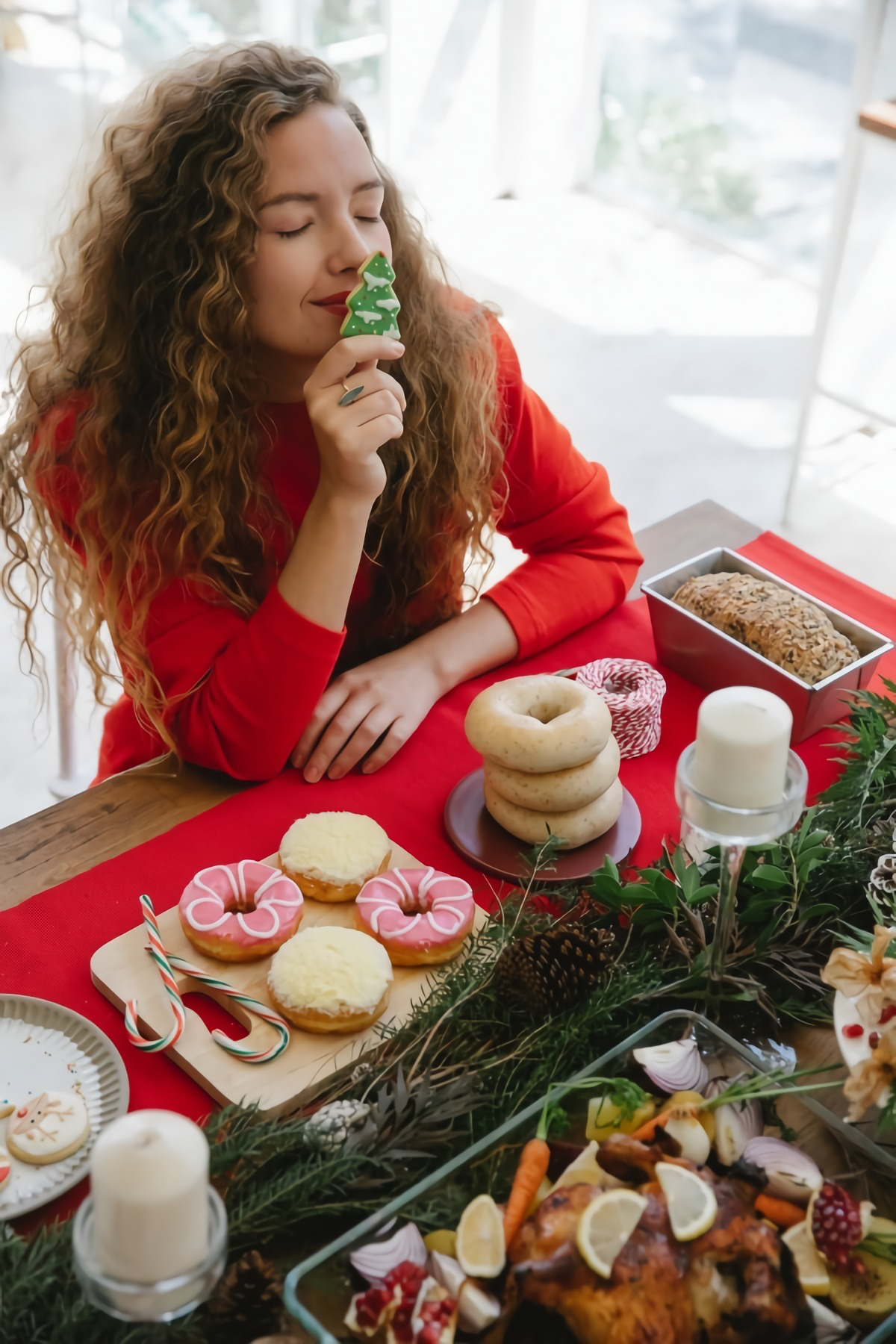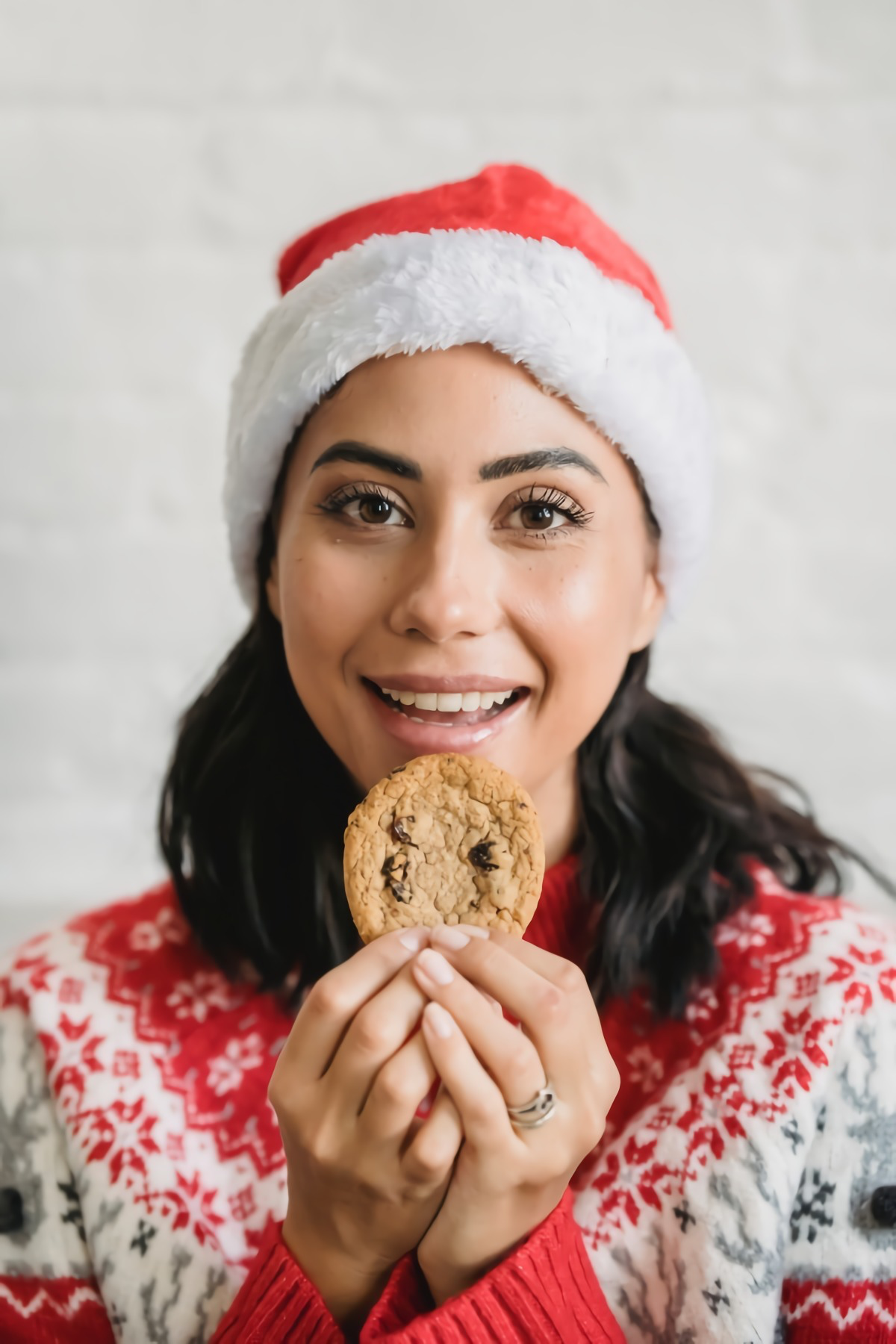Your Game Plan for Holiday Food (That Has Nothing to Do with Willpower)
I remember talking with a friend a while back who, every single year, would start to feel this wave of dread around the holidays. It wasn’t about the family drama or the money stress, which is a whole other thing. It was the food. She absolutely loved her family’s traditional recipes, but every party felt like a minefield. She’d describe this feeling of losing all control, eating until she felt sick, and then spending days swimming in guilt. She was convinced she just didn’t have enough willpower.
In this article
Honestly, after many years working as a behavioral health specialist focused on our relationship with food, I can tell you her story is incredibly common. And here’s the secret: it almost never has to do with willpower.
The holiday season is just a unique pressure cooker, isn’t it? Our normal routines get tossed out the window. We’re surrounded by amazing foods we only see once a year, social pressures are high, and let’s be real, family dynamics can stir up some complicated emotions. Your brain, just looking for a little comfort, goes for the quickest fix it knows: delicious, high-energy food. This isn’t a character flaw; it’s just biology doing its thing. So, this isn’t another restrictive holiday diet plan. Those usually backfire because they ignore the real reasons we eat. Instead, this is a practical guide to help you feel in control and actually enjoy the season—food and all.

First, a Little Science: Why Your Brain Reaches for That Cookie
To really get a handle on a behavior, you have to understand where it’s coming from. So many people feel a huge sense of relief when they learn that biology, not a lack of discipline, is fueling their cravings. It completely shifts the perspective from “What’s wrong with me?” to “What’s happening in my body, and how can I work with it?”
The Stress Connection
When you’re stressed, your body pumps out a hormone called cortisol. In short bursts, it’s great—it gives you the energy to deal with a threat. But the low-grade, constant stress of the holidays (think deadlines, travel, and social overload) keeps those cortisol levels high. This sends a screaming signal to your brain: find high-energy fuel, NOW. Your brain isn’t asking for a kale salad. It wants the fastest, most powerful energy source available, which means foods high in fat and sugar. It’s an ancient survival instinct that just isn’t a great fit for a modern holiday party.

The Two Types of Hunger: Physical vs. Emotional
One of the first things I work on with my clients is learning to tell the difference between two kinds of hunger. Getting this down is a game-changer.
- Physical Hunger is your body’s real need for energy. It shows up gradually. You might feel your stomach rumble, your energy dip, or even get a little lightheaded. The good news is that almost any food will satisfy it, and once you eat, you feel content.
- Emotional Hunger, on the other hand, is all about seeking pleasure, comfort, or distraction. It hits you suddenly and feels urgent. You’ll find yourself craving one very specific thing, usually something sweet or savory. Even after you’re full, you might want more, and it’s often followed by a wave of guilt.
During the holidays, we’re constantly navigating emotional hunger. Just pausing to ask, “Is this a ‘stomach’ hunger or a ‘head’ hunger?” can give you the breathing room you need to make a conscious choice.

The Dopamine Reward Loop
So, why does that gingerbread cookie feel so incredibly good when you’re feeling down? When you eat these super-tasty foods, your brain releases dopamine, a chemical linked to pleasure and reward. It feels good! Your brain quickly learns the pattern: Feeling stressed + Eat cookie = Feel better. The catch is that the good feeling is temporary. The dopamine rush fades, but the emotion that triggered it—sadness, boredom, loneliness—is still there. So your brain nudges you to chase that reward again. You’re not weak for wanting another one; your brain is just doing what it’s been trained to do.
Real-World Techniques for Staying Aware
You can’t manage what you don’t notice. Instead of just telling you to “be more mindful,” here are some structured tools to help you tune into what’s really going on inside your body. Think of these as foundational skills, not quick fixes.

The Three-Question Pause
Before you grab a snack outside of a planned meal, try this. It takes less than a minute. Stop, place a hand on your stomach, take one deep breath, and then ask yourself:
- What am I feeling right now? And try to be specific. Instead of just “bad,” is it anxious? Bored? Lonely? Frustrated? Just putting a name to the emotion can dial down its intensity.
- What does this feeling really need? Be honest. If you’re lonely, what you truly need is connection, not a brownie. If you’re exhausted, you need rest. The food is often just a stand-in for an unmet need.
- Could I give it something else first? This is your action step. If you’re lonely, could you text a friend? If you’re anxious, could you step outside for two minutes of fresh air? You can totally still have the food afterward, but try addressing the root cause first. A lot of the time, you’ll find the craving just… fades away.

The Super-Practical HALT Check-In
HALT is a fantastic tool that comes from recovery programs, and it’s incredibly effective. It stands for Hungry, Angry, Lonely, and Tired. These four states are huge triggers for emotional eating. Try setting a reminder on your phone to do a quick HALT check a few times a day.
- Hungry: Am I physically hungry? If yes, eat a balanced meal or snack! Don’t let yourself get to the point of being ravenous—that’s when it’s easiest to overeat.
- Angry: Am I feeling frustrated or resentful about something? Anger needs an outlet. Trying to swallow it down often leads to eating at the feeling. Instead, move your body. A brisk walk, listening to loud music, or even scribbling your frustrations in a journal can work wonders.
- Lonely: Am I feeling disconnected? Loneliness creates a void that food can seem to fill. The real solution is connection. If you can’t reach a friend, try one of these 5-minute fixes: go play with your pet for a few minutes, head to a coffee shop just to be around other people, or put on a video from a comforting YouTuber.
- Tired: Am I just plain exhausted? When we’re tired, our decision-making skills plummet. Sometimes a powerful craving is just your body’s way of begging for a nap. Can you sit down and close your eyes for 10 minutes? It’s amazing what a little rest can do.

Your Holiday Party Game Plan
Okay, theory is great, but what about when you’re actually at the party? Here are some field-tested strategies for navigating the event itself.
The Pre-Game Strategy
- Have a Stabilizing Snack. I can’t stress this enough: never, ever go to a party starving. About an hour before you go, have a small snack with protein, fat, and fiber. This keeps your blood sugar stable and takes the desperate edge off your hunger. Think a single-serving Greek yogurt, an apple with a tablespoon of peanut butter, or a small handful of almonds (about 20).
- Don’t Forget About Drinks. Oh yeah, alcohol is a big one. It lowers our inhibitions and can spike our appetite. A good plan is to decide before you go how many drinks you’ll have. A great trick is to alternate every alcoholic beverage with a big glass of water or seltzer with lime. It keeps you hydrated and slows you down naturally.
- Set an Intention. Before you walk in, decide what your main goal is. Is it to catch up with your cousin? To dance to the music? To meet someone new? Make the focus of the event something besides the food. It could be as simple as, “Tonight, I’m going to focus on having good conversations.”

- Scout First, Plate Later. Don’t just start at one end of the table and pile things on. Do a full walkthrough first. See everything that’s offered, then decide what looks truly special and worth it to you. Choose two or three things that you’re most excited about. It’s about being selective, not deprived.
- The Half-Plate Rule. A simple guideline the pros use: fill half your plate with veggies or salad first. Then, use the other half for the richer items you want to try. The fiber will help you feel fuller and more satisfied.
- Location, Location, Location. Once you have your plate, move away from the food table! Find a place to stand or sit where the buffet isn’t in your direct line of sight. Mindless grazing happens when the food is right there in front of you.
- Have a Script for Food Pushers. We all have that relative who shows love by insisting you have a second helping. It can feel awkward to say no. Have a polite, firm script ready. Try one of these: “Oh, that looks incredible! I’m so full right now, but maybe I could take a piece home for later?” Or a simple, “Thank you, it’s all so delicious. I’m just pacing myself for now!”

Tips for the Host
By the way, if you’re the one throwing the party, you can make things easier for everyone without being the “health police.” Offer plenty of water and seltzer in a visible spot. Make sure there are some simple veggie and fruit options on the table. And arrange the seating and mingling areas slightly away from the main food spread. It’s a subtle shift that helps everyone focus more on the people than the plates.
The Morning After: The No-Guilt Debrief
So what happens if you do overeat? First, BREATHE. This is where so many people get trapped.
- Dodge the “All-or-Nothing” Trap. One of the biggest mistakes is thinking, “Well, I ate three cookies, I’ve blown it. Might as well eat the rest of the plate.” This is a myth! One meal or one indulgence doesn’t derail anything. Every moment is a new chance to make a choice that feels good.
- Watch out for other mental traps. Two other common ones are the “I’ve been so ‘good’ all week, I deserve this” mindset (which treats food as a moral reward) and the “I’ll just start over in January” excuse (which gives you permission to go off the rails for weeks). Recognize these for what they are: thought patterns, not facts.
- What to do the next day? The answer is refreshingly simple: just return to your normal routine. Don’t skip breakfast. Don’t punish yourself with a brutal workout. Your body is incredibly resilient and knows exactly what to do. Just drink some water, eat your normal balanced meals, and move on. Treat yourself with kindness, not criticism.
A Final Thought on Self-Compassion
If there’s one thing I’ve learned from my work, it’s that real, lasting change comes from self-compassion, not beating yourself up. You’re going to have moments where you fall into old habits. That’s just part of being human. The goal isn’t perfection. It’s to be a little more aware, a little more intentional, and a whole lot kinder to yourself than you were yesterday.
My friend eventually learned to see the holidays differently. She started focusing on the laughter and the conversations. The food became a nice part of the celebration, not the main event. She figured out that what she really craved was peace and connection, and she found ways to give those things to herself. And that’s my hope for you, too.
When You Might Need More Support
Heads up: these strategies are great for managing common emotional eating, but they aren’t a substitute for professional care if something more serious is going on. If you feel your eating is frequently out of control, causes you major distress, involves eating in secret, and happens regularly, it might be time to talk to a pro. This is a sign of a treatable condition, like Binge Eating Disorder, and there is absolutely no shame in seeking help.
You can talk to a therapist who specializes in Cognitive Behavioral Therapy (CBT), a Registered Dietitian (RD) who can help you heal your relationship with food, or your primary doctor. Resources like the National Eating Disorders Association (NEDA) website or therapist directories like Psychology Today are great places to start looking for qualified help. A typical therapy session can range from $100 to $250, but many providers offer sliding scales or work with insurance.










